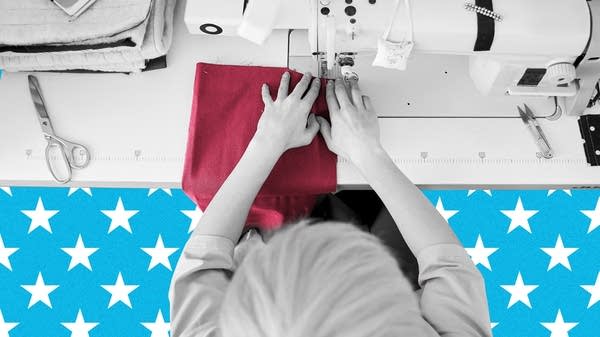The difference that New Mexico's free child care makes
In most of the country, sending a kid to day care costs more than sending one to a public university. But in New Mexico, most families can pay nothing at all.

After Vanessa Vicuña’s first child was born, she had the working mom thing figured out. She enrolled her son in day care so she could build her career as a pharmacy tech in Clovis, New Mexico.
But when her second child came along in 2021, things got harder to balance.
“So it was just like, ‘OK, I’m just working to pay day care, which doesn’t make sense to me,’” she said.
Since 2021, New Mexico has been using revenue from its oil and gas holdings to foot the costs of day care — not just for very low-income households but for much of the middle class. At the time that Vicuña had her second kid though, child care assistance in New Mexico was capped at about $53,000 a year for a family of four.
Vicuña and her husband, who works as a truck driver, made too much to qualify. “So I ended up going part-time,” she said — which meant she made a lot less money and stepped back from a management role she’d worked hard for.
“And then the child care assistance came along, and it just, it changed my life,” said Vicuña.
New Mexico’s child care assistance program expanded in July of 2021. Families making up to 400% of the federal poverty line qualify. Today, that’s about $124,000 a year for a family of four.
Now, Vicuña works nearly full time at the pharmacy. She sends her 4- and 8-year-old to day- and after-school care at no cost. Plus, there’s a little extra room in her family budget.
“We have enrolled them in every sport that we could,” she said with a chuckle.
In most of the country, sending a kid to day care costs more than sending one to a public university according to the latest tally by the Economic Policy Institute. Average costs range from a little under $7,000 a year in Mississippi to over $28,000 in Washington D.C. But in New Mexico, most families can pay nothing at all.
“Yeah, I tell everyone I know with children to move here,” said Hailey Heinz, deputy director and a senior research scientist at the University of New Mexico’s Cradle to Career Policy Institute.
She’s been talking to families about how free child care changes their budget.
“So people told us a lot of things like, ‘We were able to move into a better apartment and now we’re in a safer, better place.’ Or, ‘We were able to buy a more reliable car,’” she said.
New Mexico spends about $150 million a year on its early childhood programs, the bulk of which pays for this expanded subsidy.
The state could see a big return on that investment, especially if it helps more parents stay in the workforce, said Elise Gould, senior with the Economic Policy Institute.
“That’s more tax dollars, that’s a larger economy,” she said.
Meg Peralta-Silva is a mom of two with another baby on the way in Albuquerque, and the subsidy covers 100% of her family’s day care costs. That means she can stay at a job she likes at a local nonprofit.
“We can make a choice that’s good for our family but also isn’t just about, like, the numbers,” she said.
Peralta-Silva added that her family can choose what they consider to be good quality care — not just what they can afford.







